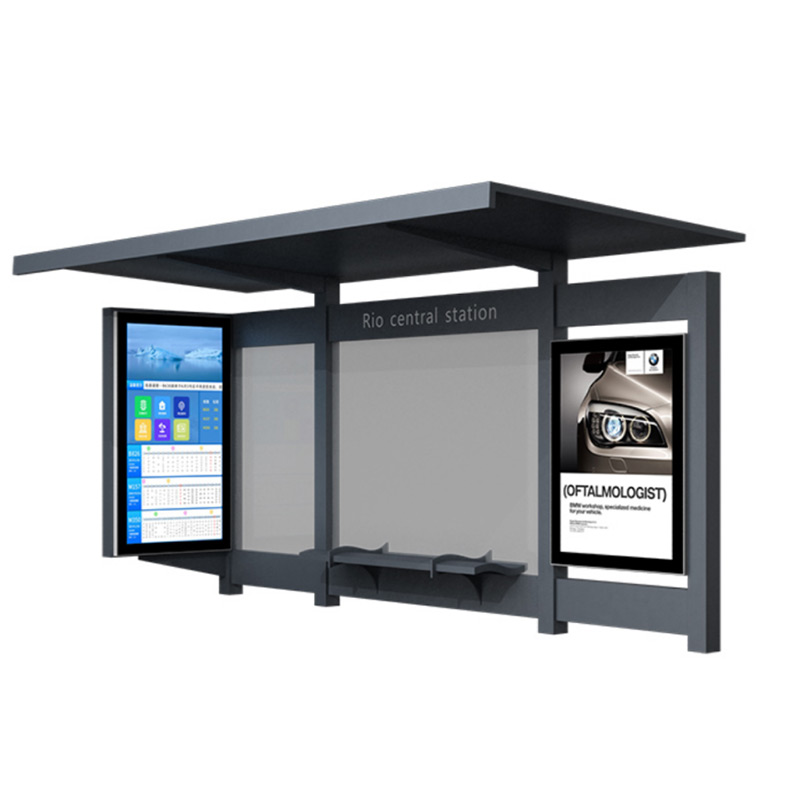What is the function of bus shelter?
2023-12-20
A bus shelter serves several essential functions aimed at providing comfort, convenience, and safety to people waiting for public transportation, especially buses. Some of its primary functions include:

1. Weather Protection: One of the primary functions of a bus shelter is to provide protection against adverse weather conditions such as rain, snow, wind, and sunlight. It offers a covered space for passengers to wait comfortably while shielding them from inclement weather.
2. Waiting Area: Bus shelters create designated waiting areas for passengers. They offer a designated space for people to gather, wait for their bus, and queue in an organized manner.
3. Shade and Sun Protection: Apart from protection against rain or snow, bus shelters provide shade and protect passengers from direct sunlight, especially during hot and sunny weather, offering a more comfortable waiting experience.
4. Visibility and Safety: Bus shelters often feature design elements that enhance visibility for both waiting passengers and approaching bus drivers. Clear signage, lighting, and reflective materials contribute to improved safety, especially during low-light conditions or at night.
5. Amenities and Information: Many bus shelters are equipped with benches or seating areas for passengers to sit while waiting. Additionally, some shelters may include route maps, schedules, or real-time arrival information to assist passengers in planning their journeys more effectively.
6. Accessibility and Inclusivity: Bus shelters are designed to be accessible to people of varying abilities, accommodating wheelchair users and individuals with mobility challenges. They contribute to making public transportation more inclusive and accessible to all.
7. Community Gathering Spaces: In addition to their primary function as waiting areas for buses, bus shelters often serve as community spaces where people can interact, socialize, or have impromptu meetings.
Overall, bus shelters play a crucial role in enhancing the overall public transportation experience by providing a comfortable, safe, and convenient waiting environment for passengers while also contributing to the urban landscape and community infrastructure.


